6. The Wayward Girl (1959)
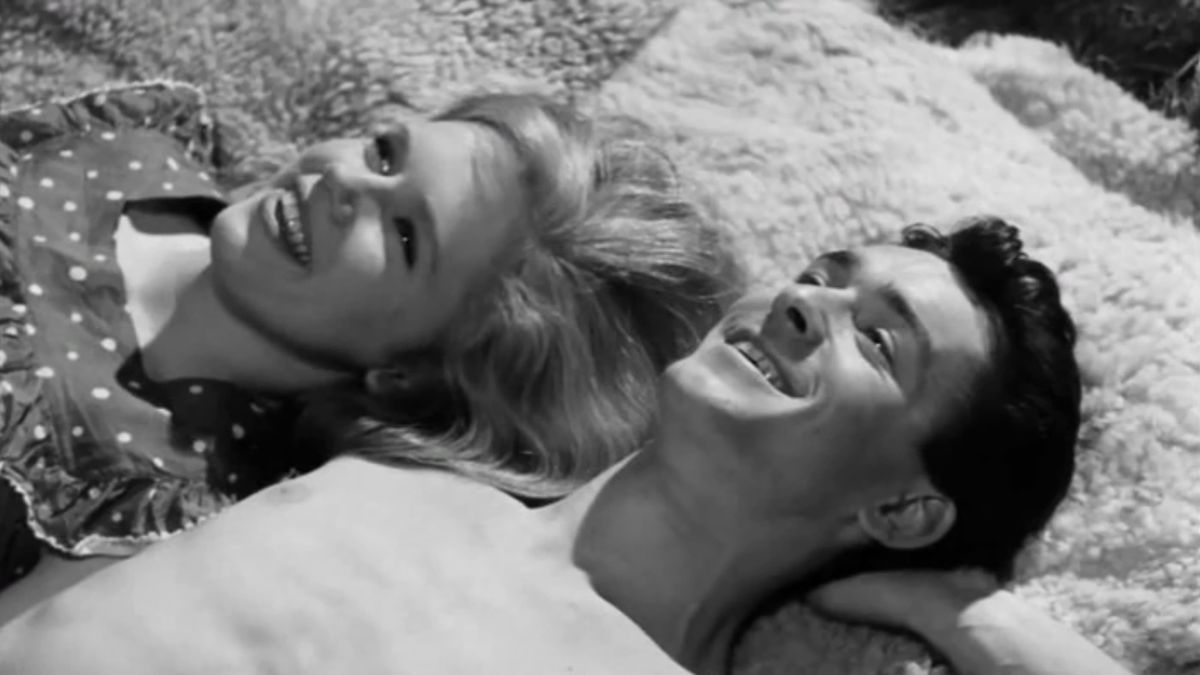
“The Wayward Girl” rounds up the decade-long cinematographic career of bold Norwegian director Edith Carlmar, while simultaneously representing the debut of a future star in the cinematographic universe – Liv Ullmann. Through this movie, Carlmar, a pioneer, if not quite the first woman director of Norwegian origin, defies the constraining social milieu of the time, with its dogmatic, narrow-minded attitudes towards women, by turning the spotlight on a self-asserting, sexually liberated young girl resolved on leading an unfettered existence.
One of the most remarkable aspects about “The Wayward Girl” may be its misleading nature, the contrast between what one expects to see and what will actually unfurl in front of one’s eyes; during the incipient part of the film one might be tempted to think that this is going to be another typical black-and-white romance, yet the viewer is unexpectedly welcomed by disinhibition, manifested through free speech and the characters’ shamelessness of their own bodies.
For instance, free-spiritedness and liberation are best exemplified here by two particular scenes considered scandalous for the time: Gerd’s inebriation that gives way to her striptease performance in front of a hypnotized Anders, and the scene where the same Gerd nonchalantly and somewhat lewdly takes off her blouse in the presence of both Anders and Bendik. What’s interesting is the openness to interpretation these actions allow, casting Gerd in various lights – on the one hand as a hedonist, on the other as merely impish, or as simply clueless when it comes to behaving in situations where her body is not desired.
At long last, this film can sometimes seem like it reinforces the trope of the bad girl trying to unsuccessfully behave herself, yet in spite of that it shows, through the unforeseen ending, how women are capable of finding peace in their own particular, most unimagined of ways, and ultimately be their own mistresses despite social dictates.
7. Duelle (1976)
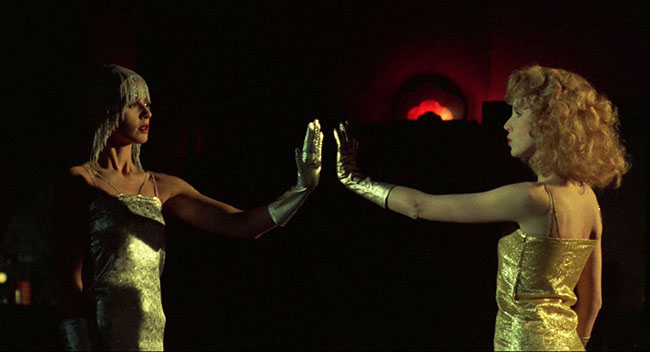
Jacques Rivette’s “Duelle” (1976) might be the true definition of a materialized fantasy, visually depicted in such a way so as to make one think that one is gliding through the passageways of an oneiric, wizardry labyrinth.
Shot the first in Rivette’s tetralogy “Scènes de la vie parallèle” (“Scenes from a Parallel Life”), “Duelle” represents the noir facet of this cinematographic quartet as well as Rivette’s dexterous plunge into the sphere of mysticism and preternaturalness.
The plot of this arcane mise-en-scène, which takes place in Paris, springs from conventional folkloric narratives about the metamorphosis from winter to spring, hypostatized here by the battle between two celestial entities – the Queen of the Sun and the Queen of the Night. The latter, having been given the human form of Leni (Juliet Berto), approaches the hotel clerk Lucie (Hermine Karagheuz) in order to co-opt her as detective into Leni’s tangled project of tracking down her beloved lost lover – a certain Lord Christie. At one and the same time, Viva – the Queen of the Sun – (Bulle Ogier) aims to entrap Lucie’s brother, Pierrot (Jean Babilée) and manoeuvre him into bringing her ends to fruition.
Nevertheless, it is unraveled throughout the movie that the real motive behind this assiduous quest is a supernatural gemstone that will bestow earthly immortality to those who manage to get hold of it first. Being doomed to spend on Earth the meagre period of only 40 days, and yearning for something other than perpetual youth, Leni and Viva will enter a dizzyingly perilous (if not also perilously dizzying) game, where each surrounding thing (including humans) will become the easily disposable satellites meant to revolve around these two overarching heavenly beings and their pivotal confrontation.
The topic as well as the cinematographic architecture of this movie were inspired by Jean Cocteau’s dreamlike feature films, something that influenced Rivette to nuance his movies with mesmeric, metaphysical occurrences, and sprinkle them with only tiny bits of realism.
Viewers acquainted with Rivette’s film repertoire will be surprised to see Juliet Berto and Bulle Ogier – Céline and Camille from “Céline and Julie Go Boating” (1974) – in such dichotomous roles as compared to those from Rivette’s more acclaimed piece. Yet despite this antinomy between Viva and Leni, it’s impossible not to note the harmony that substantializes between the two opposite poles; this is all the more evidenced by the dance of, or rather, pendulation between light and shadow, that can be best observed in two instances – one where Elsa (Nicole Garcia) ensnares Viva in the room of her hostess club enveloped in a vast obscurity, and when Pierrot pushes open door after door, each flooding with blinding sunlight detrimental to Leni’s existence on Earth.
In essence, anyone with a penchant for phantasmagorical happenings, where reality and fantasy can no longer be told apart, who wishes to be extricated from the ordinariness of everyday life, is invited to delight in this precisely two-hour long arresting spectacle.
With an aestheticism that reaches its apex thanks to the brilliant colour palette of William Lubtchansky and the mellifluous tunes of Jean Wiener’s piano, this masterpiece of a movie makes for a Rivette-ing (pun intended), unforgettable experience.
8. Slachtvee (1979)
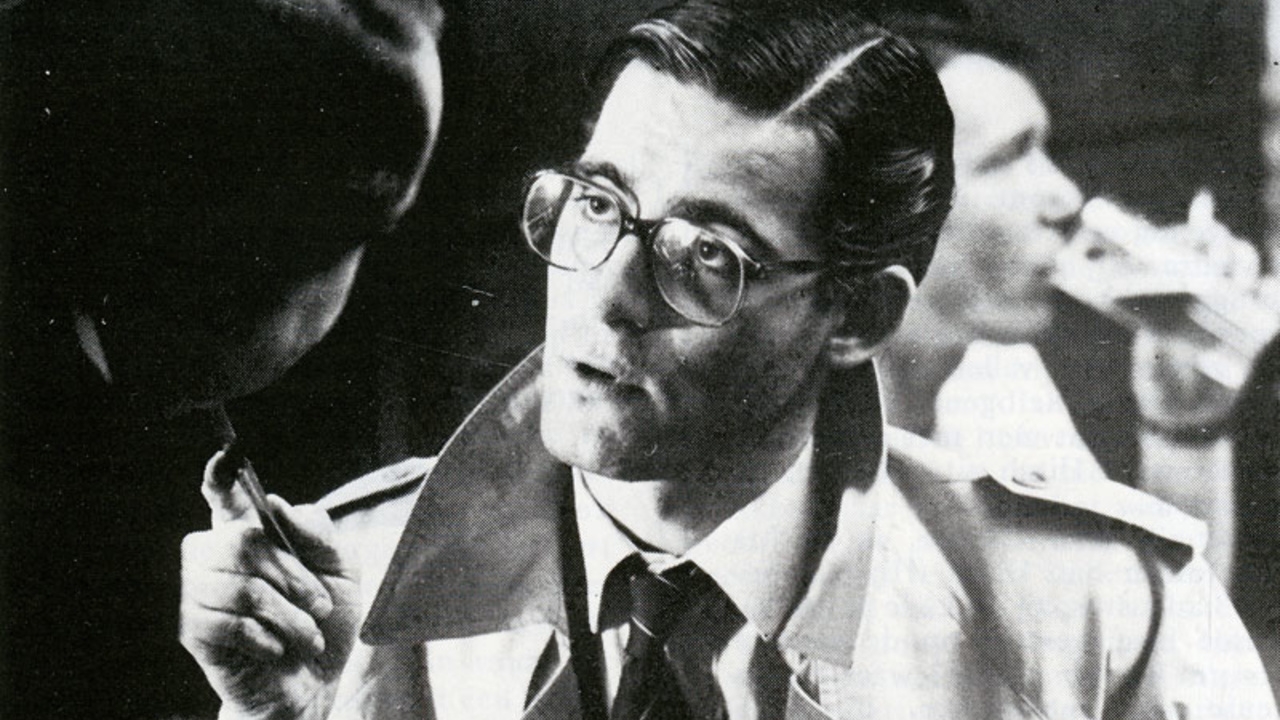
Belgian and Flemish cinematography tends to be unjustly overlooked as compared to that of its more prominent neighbours, France and Germany, but even so it can pride itself with household names such as Harry Kümel, with his spellbinding, sensualistic “Daughters of Darkness” (1971) or André Delvaux, with his chimerical “The Man Who Had His Hair Cut Short” (1966).
However, there are other “underground” artists and gems that deserve to be dusted off and valued accordingly, and one of these happens to be Patrick Conrad’s “Slachtvee” (“Beef Cattle”). This thriller bespeaks the volatility of human beings as well as the ability of just one singular event to remould a seemingly deep-rooted self into its very antipole.
The first few minutes are not particularly momentous, showing an elegantly-dressed young man named Thomas Schmidt (Herman Gilis) overlooking an inspection with his employer and his daughter, Marie-Rose (Stéphane Excoffier) at the slaughterhouse where he works. But an unexpected turnaround of events lurks in the shadows and everything stands to change when Thomas starts wandering after dark, freehandedly yet inexplicably offering large amounts of money to people he finds on seedy streets. A pimp, Rocco (Dirk de Batist) eyes him and conspires with his cronies to extort Thomas from the rest of the money he has on him. The darker side of the main character (as well as the motivation behind his actions) is soon to be revealed when he takes to arms and consequently spirals downwards to a point of no return.
It’s safe to say Conrad’s film might be the cinematographic equivalent of a Matryoshka doll – each time you think you’ve seen it all, something not in the cards occurs. For example, when Thomas pretends he wants to purchase one of the unloaded guns Rocco has brought for him, Thomas talks Rocco into giving him his fully loaded gun, an action that culminates fatally for the pimp. Yet a crucial element (as well as a jaw-dropping plot development) when analyzing and judging Thomas’s deeds is the very reason that drove him to act the way he did: his misattributed incurable diagnosis.
Given Thomas’s benevolence and warm-heartedness displayed on numerous occasions, it would be difficult, if not somewhat unfair to write him off as an antagonist; much more so when one comes to think that, on some level, Thomas may be the very personification of our unbridled instincts, restrained by the forbidding hand of the law.
If one stops to think for a minute, “Slachtvee” can be paralleled with Joel Schumacher’s “Falling Down” (1993); apart from the fact that both movies are heart-pounding and filled with action to the brim, they both center around outwardly normal protagonists overcome by existential malaise, who suddenly turn to a life of crime, each wielded by his own motivating force.
“Slachtvee” might not be a world-scale renowned movie, but for all that it manages finely to enmesh the viewer in its superbly old-fashioned yet surprisingly contemporaneous image and atmosphere. Whoever decides upon watching this movie about the life of a man who no longer has anything to lose, stands, in his turn, not to lose anything but only gain.
9. The Terrorizers (1986)
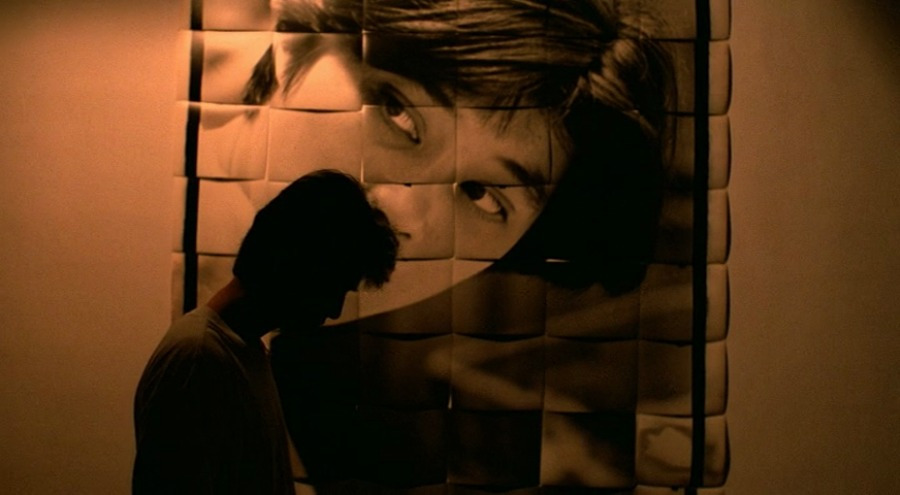
Belonging to the Taiwanese New Wave, this 1986 masterwork directed by Edward Yang, one of the most intrepid explorers of human nature, creates a harmonious tapestry of scenes united by a connective, mutual element.
In this rather pictorial work of art shot in Taipei, Yang succeeds in incorporating, amalgamating, and diluting a multitude of genres – ranging from drama and romance to crime – into a single one, thus bringing into existence a polygonal creation where opposites interlace and emotions swing backwards and forwards on a fluctuant spectrum.
The terrorizers traces the lives and distinct struggles of three couples whose existences are interlinked by an invisible thread; still, it doesn’t do that in a conventional manner, but by making the viewer feel as though they were a surveillant, watching over multiple screens at the same time yet immersing in each with a separate frame of mind.
Zhou Yufang (Cora Miao), a 30-something plagued by writer’s block, leads a domestic, unfulfilling life with her husband, a plain lab technician whose existential course is limited to, in the words of his wife, “ordinary routines.” The other romantic pair is made up of the cunning, perilous, Shu An/”White Chick” (Wang An) and her ex-convict lover, whose satisfaction derives from toying with people’s lives and engaging in petty crimes; while the third couple, Little Qiang (Shao-Chun Ma) and his girlfriend (Chia-ching Huang), is one whose relationship rests on shaky ground due to Qiang’s extreme passion for photography and the girl’s suicidal ideation.
Gradually, the story will weave itself around infidelity, confusion, existential angst, and eventually destruction, turning the lives of its protagonists upside down – sometimes for the best, as is the case with Zhou’s literary career, or for the worst, with Li’s descent into bleakness and despair.
It’s worth mentioning that parallels were time and again drawn between Yang’s movie and Antonioni’s 1966 “Blow-Up” due to the omniscience and importance accorded to camera lenses in capturing the chain of events; yet, as compared to the Italian director’s film, Yang’s creation tends to focus more (and expertly so!) on the chromatism of places and landscapes. Watching the movie can sometimes feel like watching a giant paintbrush waltzing graciously on a colour palette, stepping into every existent hue on its surface.
Throughout the course of the movie, scenes change from being showered in multicolored neon lights to being pigmented with bright yet curiously subdued shades of red and blue, as if to match the ever-changing moods of the characters. The presence of vibrant colours tinged with a sweet paleness are a distinguishing mark of Asian cinematography, one would daresay inimitable in the world of filmdom, so there’s no wonder its presence in Yang’s postmodern creation.
Sometimes slightly evocative of a nature documentary due to the scarcity of lines and lack of focus on verbal expression in the favour of visual imagery, “The Terrorizers” seems to reinforce the futility of language in the face of our basic yet most vivid of senses.
Human relations are hands down one of the most puzzling and convoluted parts of any individual’s existence, and Yang’s movie doesn’t shy away from expressing that fact; but it nevertheless does so in the most delicate, splendorous of manners, one that makes it appear as half-poem, half-painting in motion.
If you happen to be interested in witnessing a dazing transition from serenity to gloominess, on the backdrop of the rhythmical, soul-stirring tunes of The Platters’ “Smoke Gets in Your Eyes,” then there simply must be no match as good as this.
10. Chocolat (1988)
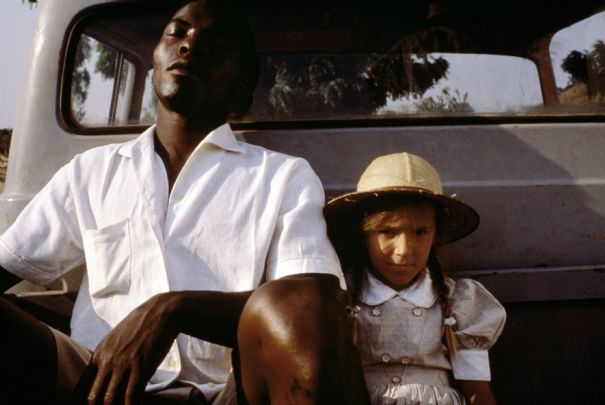
Colonialism and racial tensions have always been hot, pressing subjects, used as sources of inspiration for countless artistic creations, ranging from literary works to cinematographic ones. Yet in the cinematographic realm, few movies have outlined the discrepancy between and exploitation of ethnicities as poignant and contemplative as Claire Denis’s 1988 debut feature “Chocolat.”
Having worked as assistant director for Wim Wenders’s “Wings of Desire” (1987) and “Paris, Texas” (1984), as well as for Jim Jarmusch’s “Down by Law” (1986), and having had experience with the African life, Denis processed all these in her own particular manner and gave birth to a fresh form and perspective toward one of the most fundamental social issues in existence.
Essentially, “Chocolat” chronicles the life of the French Dalens family, set in the 1950s, composed of a mother, Aimée (Giulia Boschi), her husband, Marc (François Cluzet) and their little daughter, France (Mireille Perrier) who live in colonial Cameroon with their servants of colour. This entire story is flashed back from the present and narrated by France who, emboldened by nostalgia and a desire to better know her past, returns to the place she spent her childhood in.
Throughout the narrative we find out about her emotional attachment to the black servant, Protée (Isaach De Bankolé), who comes to repeatedly suffer verbal and physical abuse at the hands of white people, and also about the domestic life and various surroundings seen through her childlike, ingenuous eyes.
“Chocolat” is a rather slow-cadence movie, with a focus on saying less and meaning more, unfilled with spine-tingling action, concentrating instead on smaller, easy to miss yet impactful details. Under the lovely cinematography of Agnes Godard, with its sandy, sun-dipped hues that can make one’s gaze linger a little bit too long on the background, “Chocolat” entangles two distinct attitudes towards race and racism: the more subtle one, through unthinking though hurtful comments, and the direct one, through outward, deliberate violence. Through these, it tries to underline the plurality of forms racism can take while stressing the equally painful and indelible marks all of them can leave.
Also mentionable about this film is the attention conferred to names and their relevance in regards to the object they denominate or make reference to – such as France, Protée or Aimée. For instance, Protée’s name sounds awfully similar to the French word “protéger” and, by extension, to the English word “protect,” the exact same thing Marc asks Protée to do during his absence, to take care of his family. On the other hand, it might also be an ironical allusion to the failure of the white race to show kindness and ensure protection to Protée and his people instead of subjecting them to excruciating, unnecessary torture.
Ultimately, “Chocolat” addresses anyone interested in probing through France’s colonialist and post-colonialist past, to everyone keen on getting a better understanding of this period that so fiercely reverberates to our modern day and life. Semi-biographical in origin, this movie featuring sometimes dreamy, sometimes upbeat jazz pieces brought to life by the grandmaster Abdullah Ibrahim, shows a key facet in the progression of history, one that makes the viewer put their thinking cap on and reimagine the distant past through their present-day, hopefully more receptive mindset.